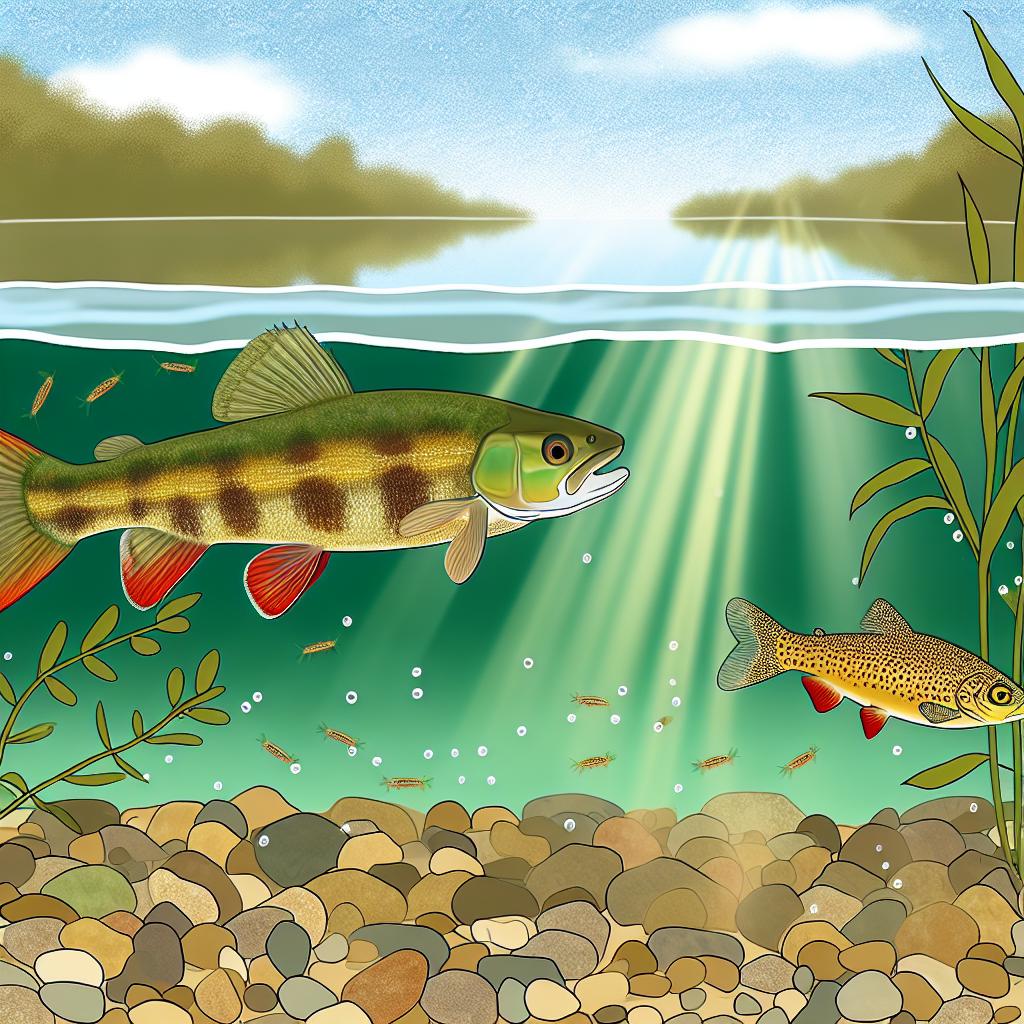Introduction
Many of the lakes in the United Kingdom are home to diverse native fish species. These fish are integral to the aquatic ecosystems and offer insight into the complex ecological relationships within freshwater habitats. Understanding the native fish species is important not only for ecological balance but also for conservation efforts aimed at protecting these vital creatures.
Common Native Fish Species
One of the most widespread native fish species found in UK lakes is the European perch (Perca fluviatilis). Recognized by its distinct greenish body and vertical black stripes, the European perch thrives in a variety of aquatic environments, from slow-moving rivers to large lakes. These fish are highly adaptable and can be found in both deep and shallow waters, where they play a key role in the food web by preying on smaller fish and aquatic invertebrates.
Another prevalent native species is the northern pike (Esox lucius), known for its elongated body and sharp teeth. The northern pike serves as a top predator, playing a crucial role in controlling the population of smaller fish species. Its presence is vital for maintaining the equilibrium of fish communities, preventing overpopulation of certain species and ensuring a healthy, balanced ecosystem.
The common roach (Rutilus rutilus) is also found in many UK lakes. This fish has a silvery body with a hint of red in its fins and eyes. The roach is often seen swimming in large schools, which can be an impressive sight in the clear waters of many lakes. It occupies a significant ecological niche by serving as both a predator of smaller organisms like insects and a prey species for larger fish, birds, and mammals.
Special Focus: Brown Trout
The brown trout (Salmo trutta) is a native fish species that merits special attention. Unlike many other fish, brown trout have the ability to thrive in both freshwater and marine environments, with some populations migrating to the sea. This characteristic makes them unique and highly adaptable. Known for their brown spots and varied colouration, brown trout are appealing to both anglers and conservationists. Anglers prize them for their fighting spirit and the challenge they present during fishing.
Their adaptability to various habitats means that brown trout can be found in a wide range of aquatic environments, from cold, fast-flowing rivers to still, deep lakes. To learn more about brown trout, you can explore resources provided by The Wild Trout Trust, which is dedicated to the conservation of trout habitats. This organization works to protect the diverse environments needed by trout to spawn, grow, and mature, ensuring their continued presence in UK waters.
Conservation Concerns
There are ongoing challenges in conserving the native fish populations in UK lakes. Factors such as pollution, invasive species, and habitat degradation threaten the delicate balance of these ecosystems. Industrial activities, agricultural runoff, and domestic waste contribute to water pollution, affecting water quality and fish health. Invasive species, including the signal crayfish and zebra mussel, outcompete native species for resources and disrupt the ecological balance.
Moreover, habitat degradation caused by land development and water abstraction alters the natural environment, making it less hospitable for native species. These issues underscore the importance of concerted conservation efforts to safeguard these habitats and the species they support.
Protective Measures and Initiatives
Organizations such as The Environment Agency work to monitor fish stocks and implement conservation strategies. These include habitat restoration projects, controlling invasive species, and educating the public about the importance of maintaining healthy fish populations and ecosystems.
Habitat restoration efforts focus on reinstating natural water flows, replanting native vegetation along riverbanks, and removing barriers to fish migration. Controlling invasive species involves measures like targeted removals and public awareness campaigns to prevent accidental introductions.
Public education plays a critical role in conservation. By informing communities about the significance of native fish species and the threats they face, these projects encourage sustainable practices and foster a collective sense of responsibility for the environment.
Conclusion
Native fish species in UK lakes contribute significantly not only to ecological diversity but also to the cultural and recreational landscape of the country. These species are an integral part of the traditions and livelihoods of many communities, supporting recreational fishing, tourism, and artisan fisheries. Protecting these species requires ongoing efforts and collaboration among various stakeholders, including government bodies, non-governmental organizations, and local communities.
Understanding their role within freshwater ecosystems helps ensure these native species can thrive for generations to come. With continued focus on conservation, habitat restoration, and public engagement, these efforts can help secure the future of the UK’s native fish populations and the ecosystems they inhabit. Through such initiatives, we can foster a deeper appreciation and commitment to preserving the natural heritage of UK lakes for all to enjoy.
